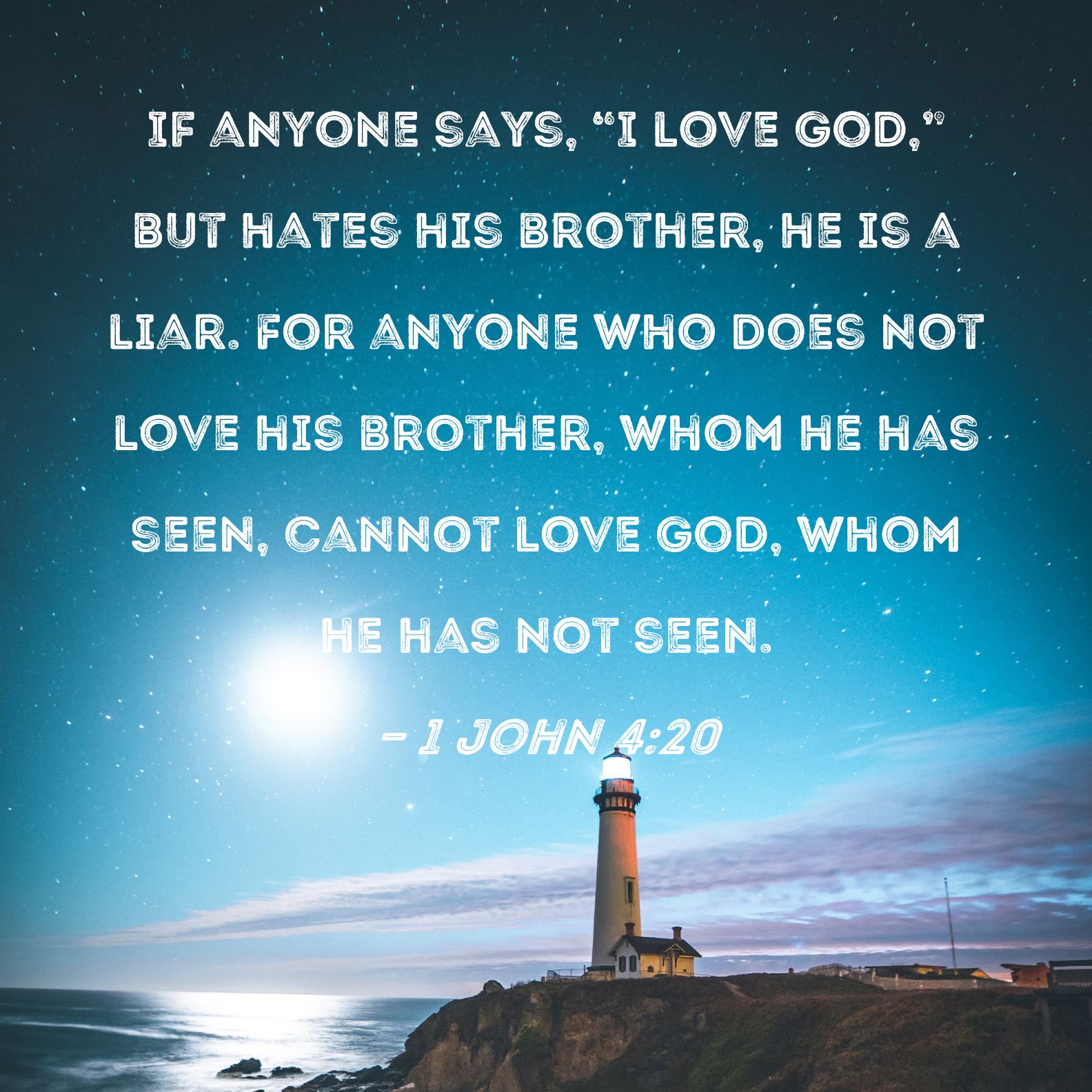Let's compare the 4:
I will quote 1:John 4:20

1 John 4:20 - Love Comes from God
If anyone says, I love God, but hates his brother, he is a liar. For anyone who does not love his brother, whom he has seen, cannot love God, whom he has not seen.biblehub.com
New American Standard Bible
If someone says, "I love God," and hates his brother, he is a liar; for the one who does not love his brother whom he has seen, cannot love God whom he has not seen.
New King James Version
If someone says, “I love God,” and hates his brother, he is a liar; for he who does not love his brother whom he has seen, how can he love God whom he has not seen?
King James Bible
If a man say, I love God, and hateth his brother, he is a liar: for he that loveth not his brother whom he hath seen, how can he love God whom he hath not seen?
Now compare, not only the literalness of YLT, but also the tenses and grammar which follows the Grk text quite nicely.
And because of it's literalness to the Grk texts, it is more awkward to read for newer Christians so it must be read slowly.
Young's Literal Translation
if any one may say -- 'I love God,' and his brother he may hate, a liar he is; for he who is not loving his brother whom he hath seen, God -- whom he hath not seen -- how is he able to love?
========================
YLT it younger than the KJV but older than the NKJV and NASB.
IMHO,YLT is more accurate and literal than either of the other 3.
Young's Literal Translation (YLT) is a translation of the Bible into English, published in 1862. The translation was made by Robert Young, compiler of Young's Analytical Concordance to the Bible and Concise Critical Comments on the New Testament. Young used the Textus Receptus (TR) and the Masoretic Text (MT) as the basis for his translation.
The King James Version (KJV), also known as the King James Bible (KJB), sometimes as the English version of 1611, or simply the Authorized Version (AV), is an English translation of the Christian Bible for the Church of England, commissioned in 1604 and completed as well as published in 1611 under the sponsorship of James VI and I.[a]https://en.wikipedia.org/wiki/King_James_Version#cite_note-3
The New American Standard Bible (NASB) is an English translation of the Bible by the Lockman Foundation.[2]
The New Testament was first published in 1963, and the complete Bible in 1971.[3] The most recent edition of the NASB text was published in 1995.
The New King James Version (NKJV) is an English translation of the Bible first published in 1982 by Thomas Nelson.[1] The New Testament was published in 1979, the Psalms in 1980, and the full Bible in 1982. It took seven years to complete.[2] The anglicized edition was originally known as the Revised Authorized Version, but the NKJV title is now used universally.
What do you mean by "more accurate and literal"? Translation, the act of translating both the words and meaning is both a science and an art. Even if a literal word-for-word translation was possible, which it isn't, it would be confusing since not only are the languages -- vocabulary, grammar, syntax, idioms, etc. -- different but modern Western thought and culture are also different. If an ancient Greek, for example, was somehow transported thousands of years into our present, s/he would be totally confused and "lost" culturally, and the same principle holds true if we were somehow transported thousands of years into the past. In fact, if someone was transported into our time from early 17th Century England, s/he would be totally confused and "lost". That is the main reason that the King James Version is not suitable for the 21st Century. We don't speak, write, think, or live the way people did 400+ years ago. And they didn't speak, write, think, or live the way people did 1600 years before that.
The goal of any translation should be to communicate the authors' thoughts, ideas, and words to our thoughts, ideas, and words as clearly and transparently as possible.





